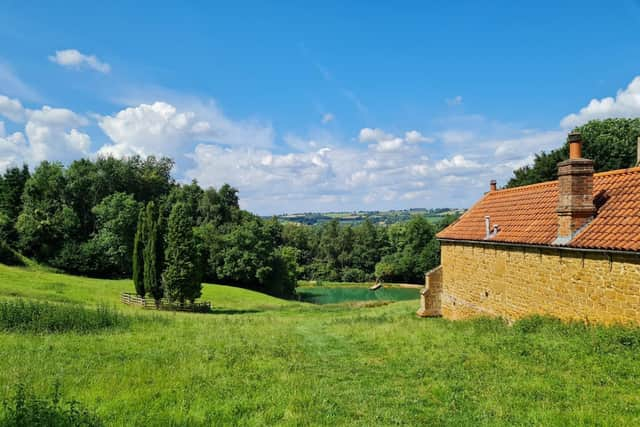Oxfordshire Treescapes Project launched to help farmers and land owners discover how to best plant trees
and live on Freeview channel 276
The Oxfordshire Treescapes Project has found that Oxfordshire needs to establish 400 hectares, the equivalent of 750 football pitches, of new woodland every year between now and 2050 to meet Climate Change Committee targets.
In its new report, ‘Our Land, Our Future’, launched October 15, the project highlights how the benefits of treescapes (woodland, hedgerows, species-rich grassland and agroforestry farming systems) are currently being delivered at a fraction of their true potential across the county.
Advertisement
Hide AdAdvertisement
Hide AdIn order to meet the Climate Change Committee’s net zero targets for 2050, the report also finds that: Hedgerows need to be reintroduced to around a further 20 per cent of agricultural fields across the county.


An even greater prize lies in converting all farming in Oxfordshire to agroforestry over the next thirty years, in which trees are grown amongst crops and livestock with minimal impact on food production. This would result in an estimated 44 per cent increase in biodiversity and a twofold increase in carbon capture rates from nature to over one million metric tonnes of Carbon Dioxide equivalent (tCO2e) a year.
This is equivalent to over 20 per cent of Oxfordshire’s greenhouse emissions in 2018, and, as agriculture represents around 13 per cent of total emissions, would take agriculture in Oxfordshire to net zero and beyond.
The report concludes with a call for all stakeholders in Oxfordshire’s land use to come together and agree a vision and plan of action that will lead the county to net zero and to nature recovery.
Advertisement
Hide AdAdvertisement
Hide AdJamie Hartzell, the project co-ordinator, said: “We clearly need to rebuild our natural environment, farm with nature rather than against it, and build resilience into our land.
“Treescapes, if sited in the right place and for the right reason, are part of the solution. But trees take many years to mature, so we must act now if we are to realise these benefits by 2050.”
The Oxfordshire Treescapes Project, newly created by the charity GrowGreenCarbon with the support of Oxford University’s Environmental Change Institute, is designed to support farmers and landowners maximise opportunities to address biodiversity loss, slow climate change, reduce flooding and contribute to both human wellbeing and food production.
The Project has created opportunity maps which show the right and wrong places to introduce treescapes into rural and urban Oxfordshire. The maps also indicate the benefits land use changes would have for food production, biodiversity, carbon capture and storage, flood management and soil erosion control, recreation and wellbeing, air pollution and noise reduction, and timber production.
Advertisement
Hide AdAdvertisement
Hide AdThe maps have been developed following extensive consultation with farmers and landowners plus a wide range of stakeholders with an interest in land use, including academics, foresters, conservation organisations, community groups, government agencies and land agents.
The maps are available on the Oxtrees website www.oxtrees.uk.
Jamie Hartzell added: “A tree in the right place can reduce flooding, limit air pollution and offer recreational benefits but in the wrong place it may simply damage a valuable existing habitat such as meadows or wetlands.
“Our maps bring together the views of all stakeholders to create a broad consensus. They are the perfect starting point to build a common vision of the actions we all need to take on our land to avert the climate crisis and support nature recovery.
“The challenge now is to combine food production with nature-based solutions.”